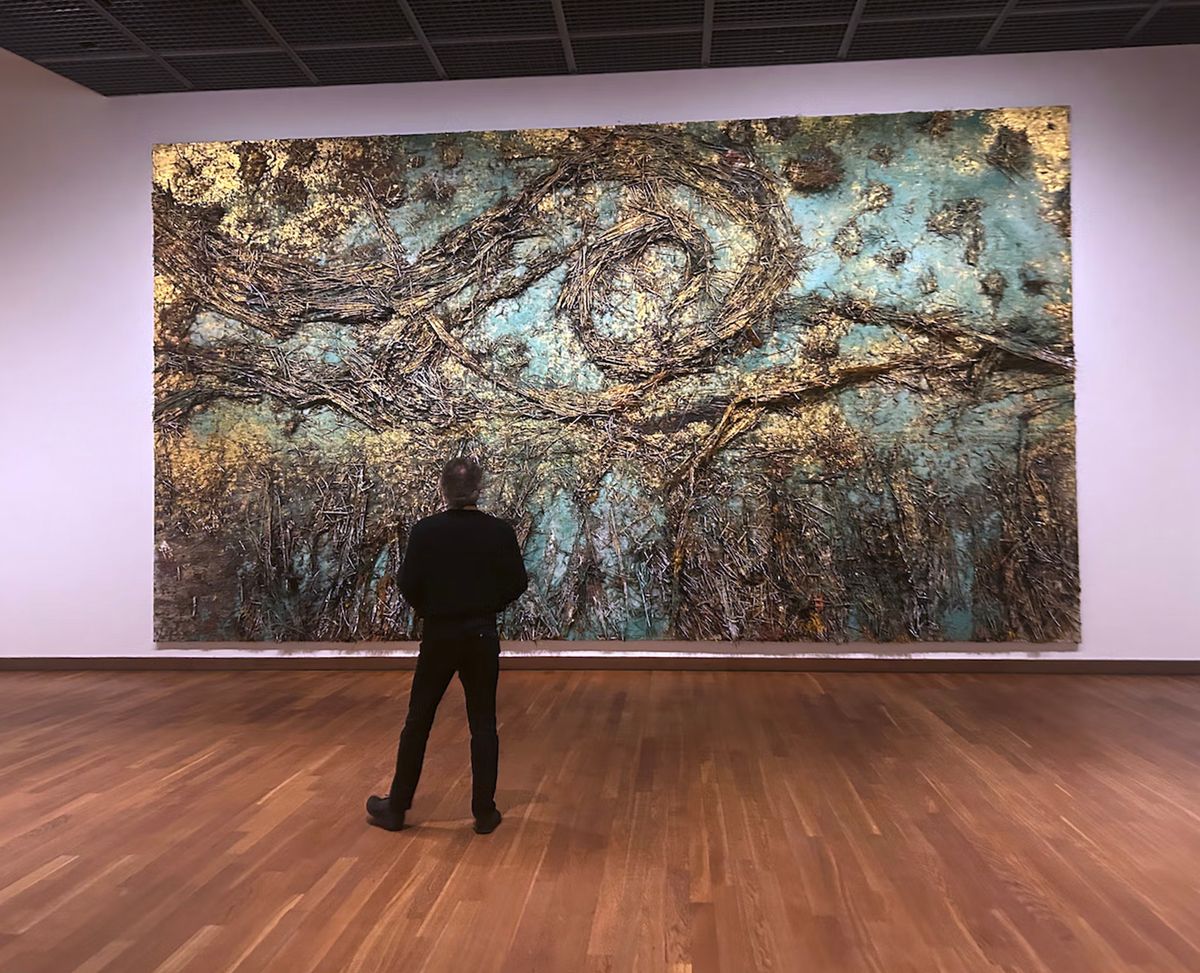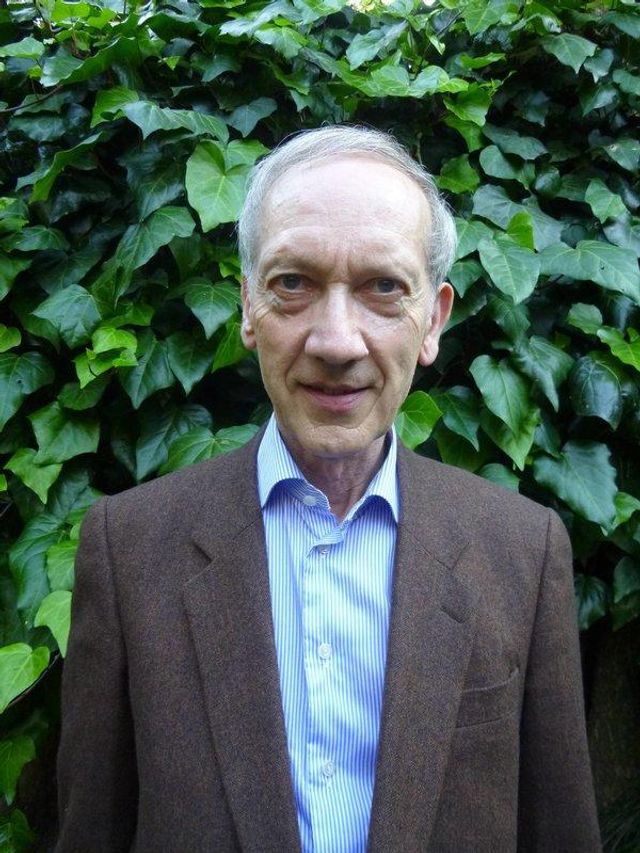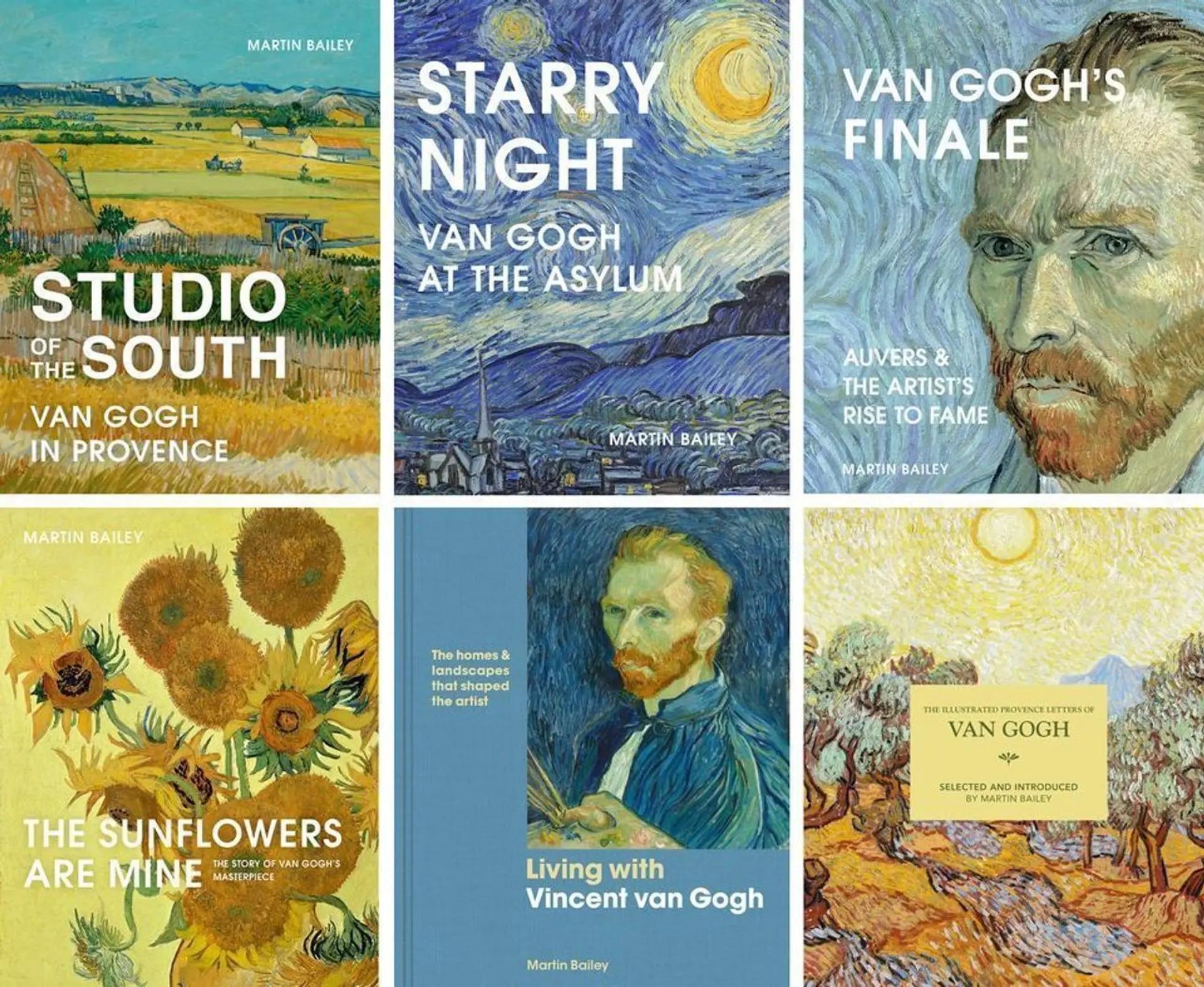Anselm Kiefer, who turns 80 this weekend, travelled in Van Gogh’s footsteps when he was 18, hitchhiking his way through the Netherlands, Belgium and France. He has now returned to the Dutchman’s inspirational art, creating massive works. These are on display from today at Amsterdam’s Van Gogh Museum (until 9 June) and then, in a slightly different form, at London’s Royal Academy of Arts (28 June-26 October).
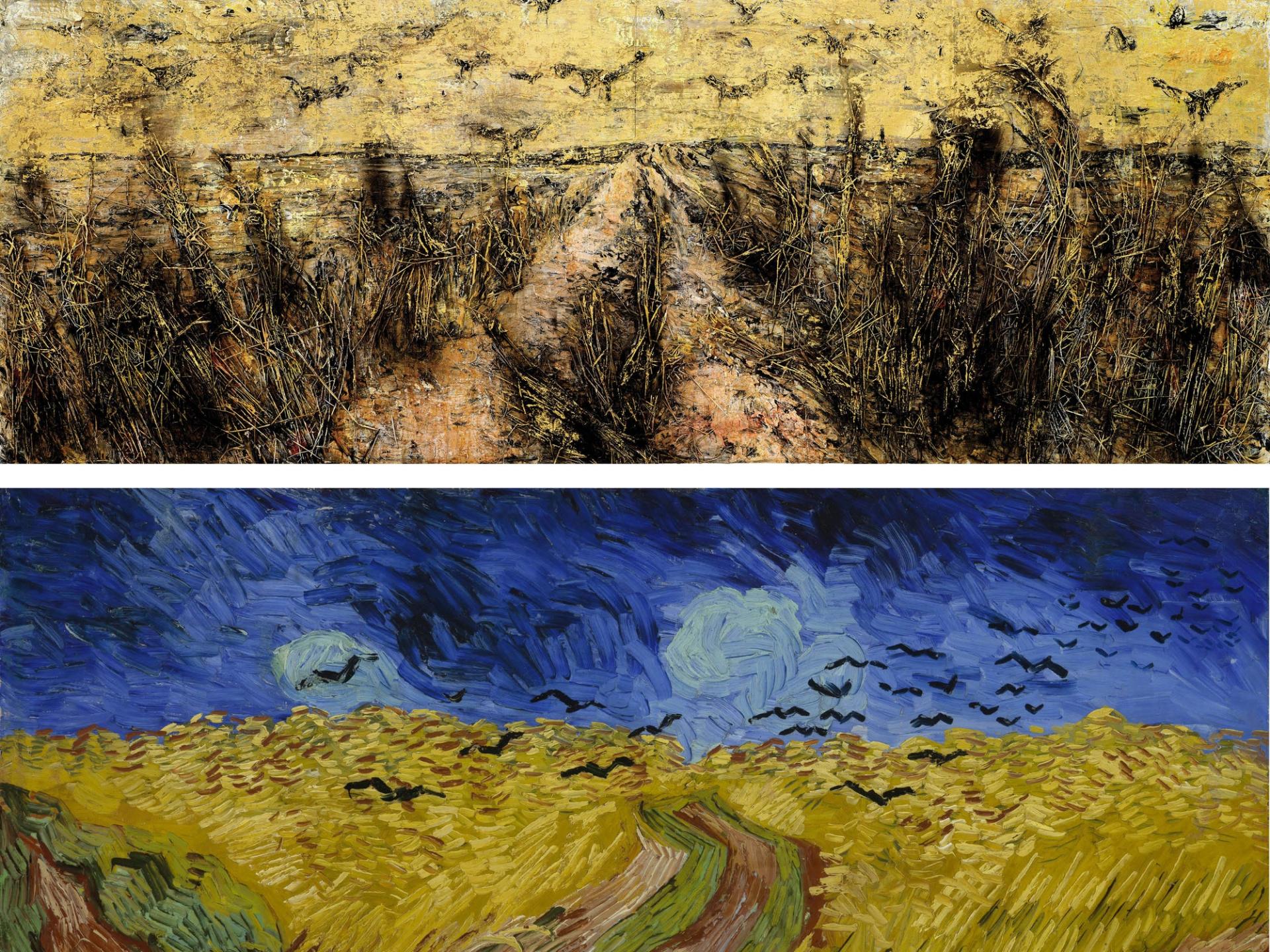
Kiefer’s The Crows (Die Krähen) (2019) and Van Gogh’s Wheatfield with Crows (July 1890)
Artist’s collection, courtesy White Cube (photograph Georges Poncet) and Van Gogh Museum, Amsterdam (Vincent van Gogh Foundation)
In Amsterdam the Van Gogh Museum’s exhibition is a collaboration with the neighbouring Stedelijk Museum, where Kiefer’s links with the Netherlands are explored. Both shows are entitled Anselm Kiefer: Where have all the flowers gone (Sag mir wo die Blumen sind). This refers to the 1955 anti-war ballad by the American folk singer Pete Seeger, the inspiration for an enormous painting created by Kiefer for the Stedelijk's display.
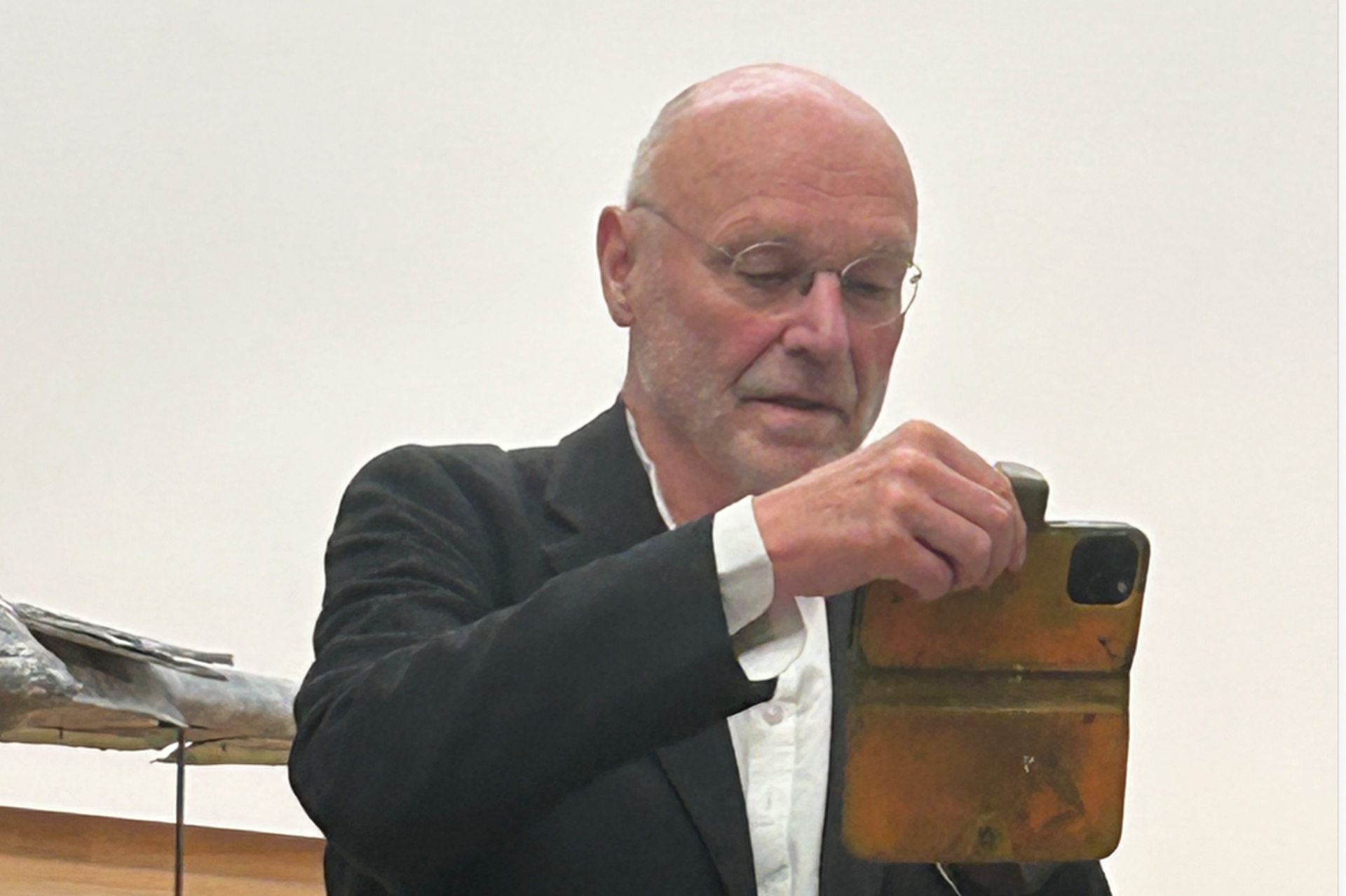
Artist-turned-photographer: Kiefer at Amsterdam’s Stedelijk Museum, 6 March
Martin Bailey, The Art Newspaper
The Van Gogh Museum’s presentation, curated by Edwin Becker and director Emilie Gordenker, naturally focuses on resonances with the Dutchman’s work. In 1963 Kiefer, for his first trip outside Germany, had won a travel grant to visit the places where Van Gogh lived and worked. He started in Zundert, the village in the south of the Netherlands where Vincent was born, and later continued to Antwerp, the coal-mining area of the Borinage, Paris, Auvers-sur-Oise, Arles and Saint-Rémy-de-Provence. En route he kept a diary, filled with sketches and notes.
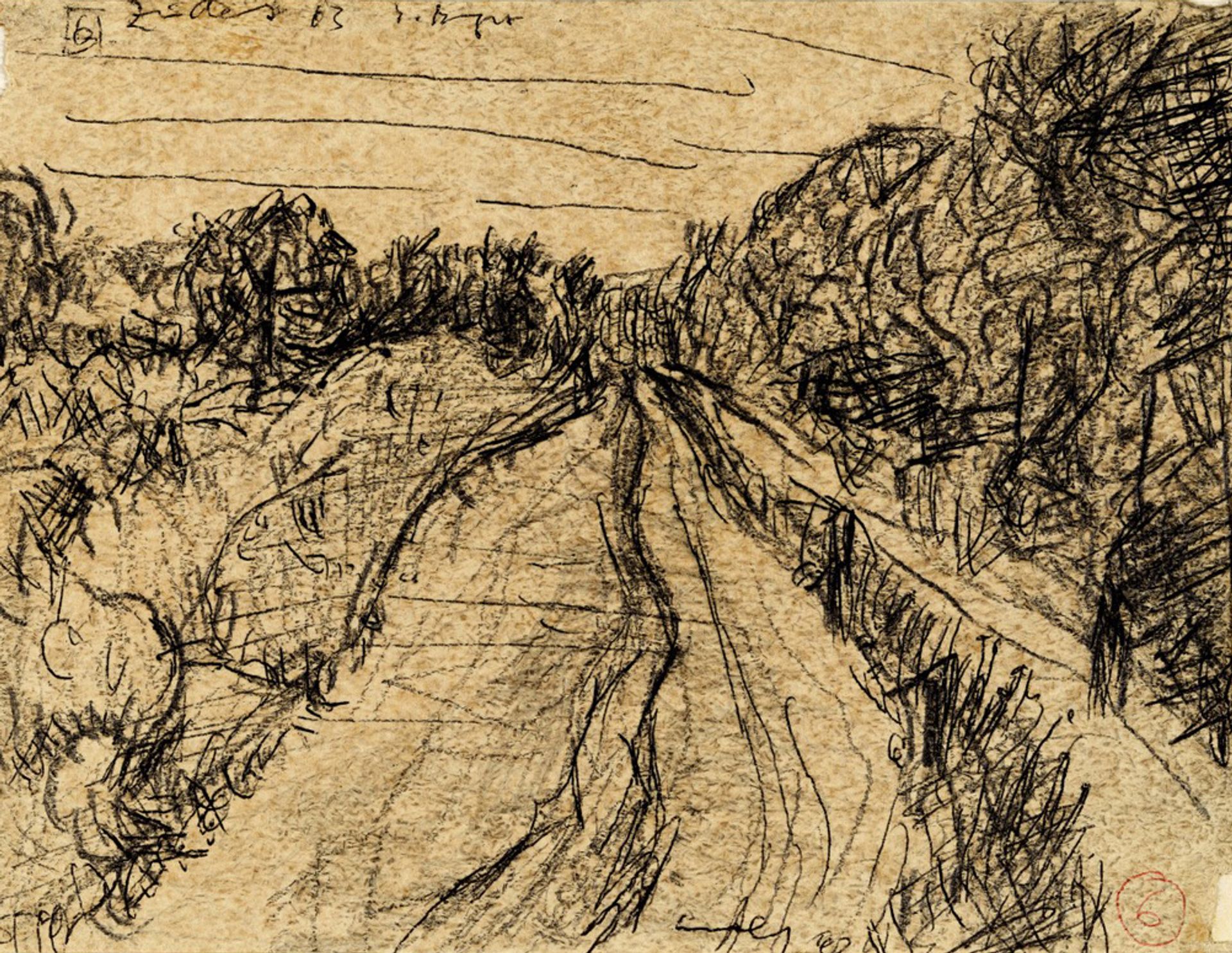
Kiefer’s Untitled (1963), drawn on his pilgrimage on the Van Gogh trail
Artist’s collection
Looking back, Kiefer comments that “contrary to what one might expect of a teenager, I was not overly interested in the emotional aspect of Van Gogh’s work or in his unhappy life”. What impressed him about Van Gogh was “the rational structure, the confident construction of his paintings, in a life that was increasingly slipping out of his control”. It was the art, not the story, that captured his interest.
The inspiration has never left him. In 1995 Kiefer made Sol Invictus (The Unconquered Sun), a work nearly five metres high, created with paints and sunflower seeds. The elongated flower head with wilting leaves towers over a naked figure in a corpse-like yoga pose, representing Kiefer himself. The seeds shower down, almost like flies swarming above a body. Although Kiefer’s ominous, dark sunflower could hardly be more different from Van Gogh’s exuberant Provençal blooms, the flower has fuelled both artists’ imaginations.
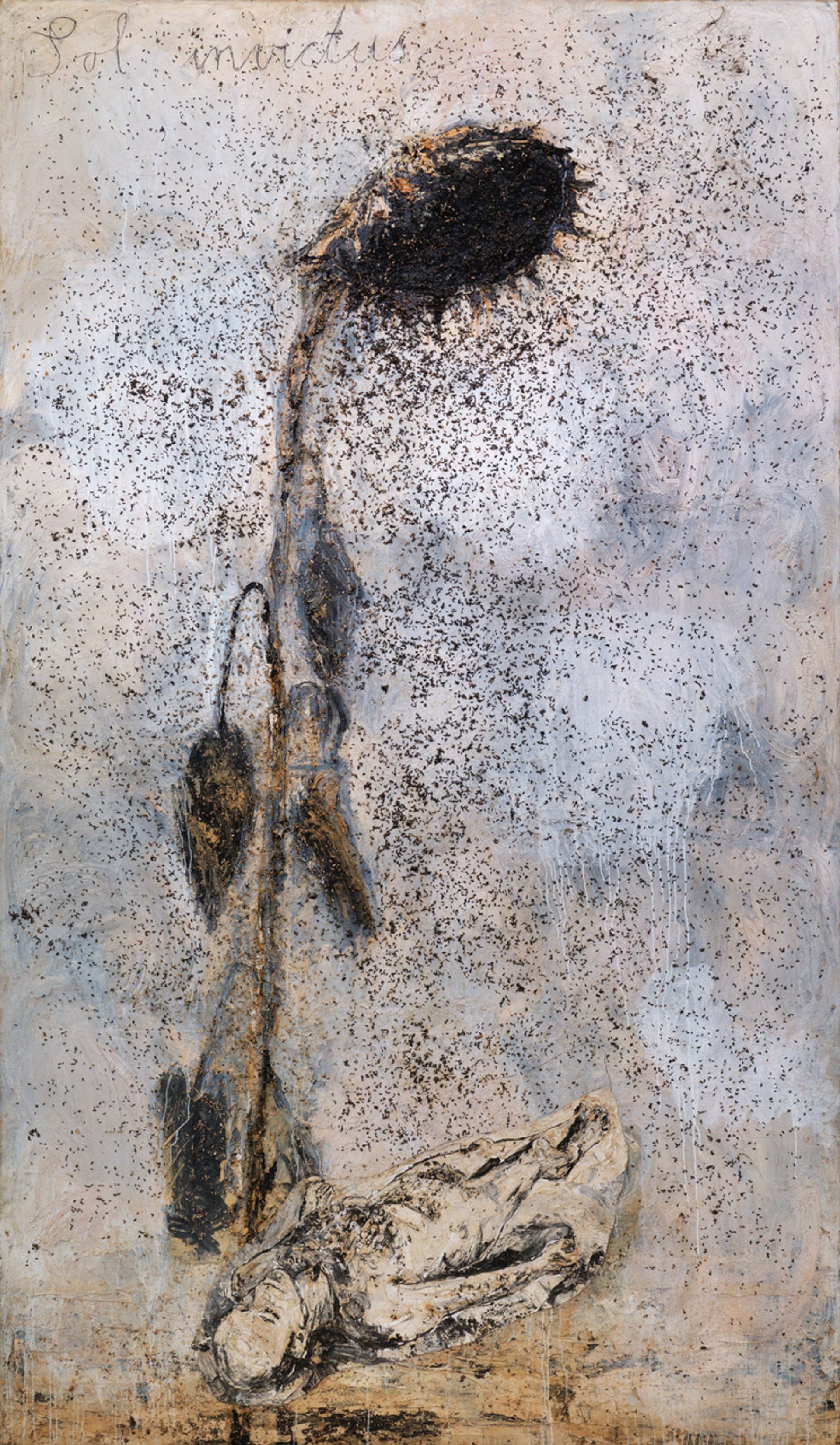
Kiefer’s Sol Invictus (1995), now redone with artificial sunflower seeds
Artist’s collection (photograph Charles Duprat)
Kiefer grew sunflowers himself, then harvested the seeds. But the seeds on Sol Invictus caused concern for the Van Gogh Museum’s conservators, since they had attracted insects. At the last moment Kiefer replaced them with artificial ones (although the exhibition caption still records them as “sunflower seeds”).
Once the current exhibition was planned, Kiefer returned to Van Gogh’s themes to create further highly ambitious mixed-media pieces. In O Stalks of the night, a title coming from a poem by Paul Celan, he used gold leaf, straw, clay, steel and plaster, along with more conventional paint. The straw links the work with Van Gogh’s late paintings of wheatfields, and the colouration more specifically with Wheatfields with Crows (July 1890).
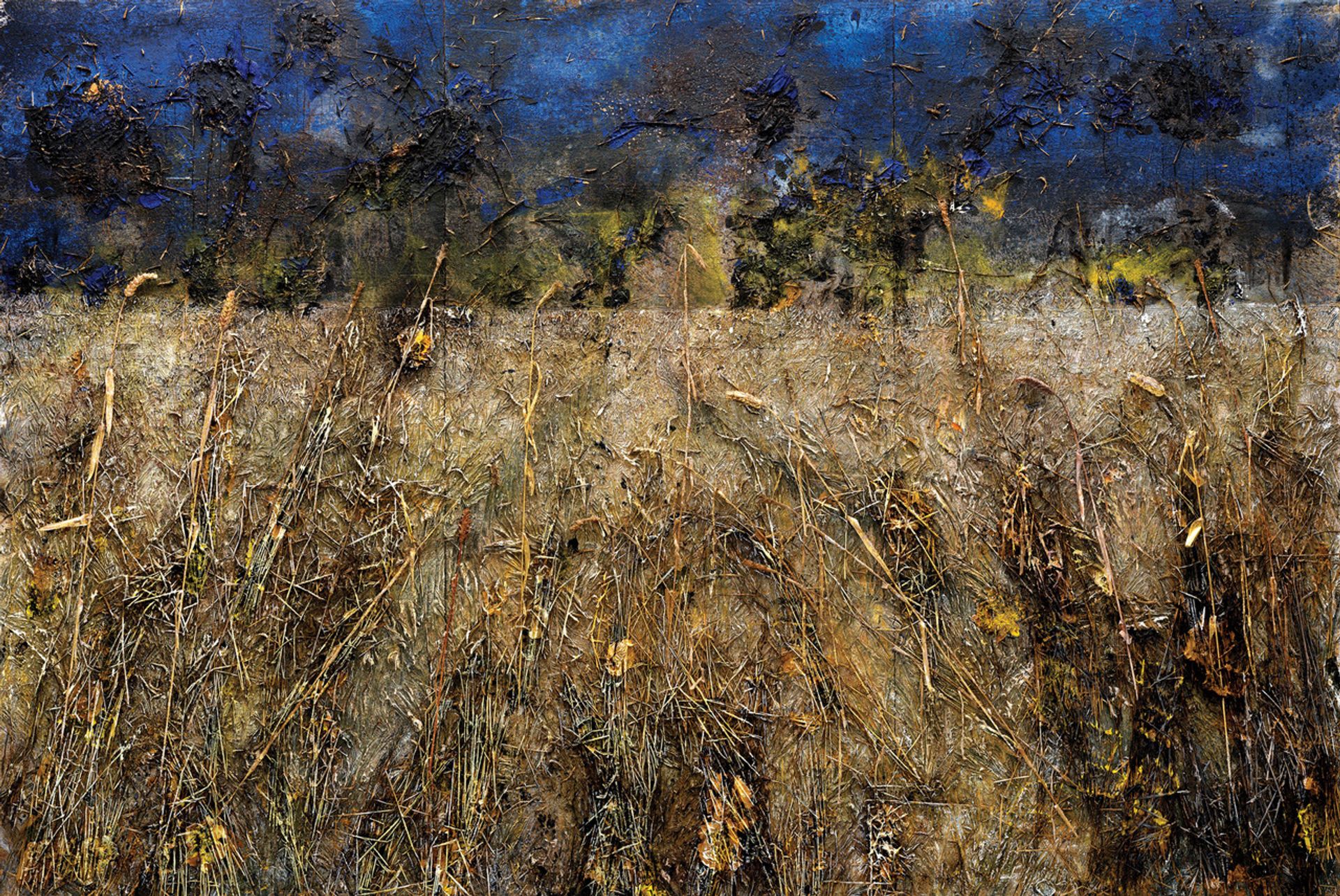
Kiefer’s O Stalks of the night (O Halme der Nacht) (2019-21)
Artist’s collection, courtesy White Cube (photograph Georges Poncet)
Although Kiefer believes that Van Gogh painted Wheatfields with Crows in front of the landscape in Auvers, he says that this was just the Dutchman’s starting point. “What does he depict?” he asks. “Not the wheatfield, not the romantic memory of a specific summer’s day. The painting is almost abstract. What remains is the memory of something specific that has almost completely disappeared.”
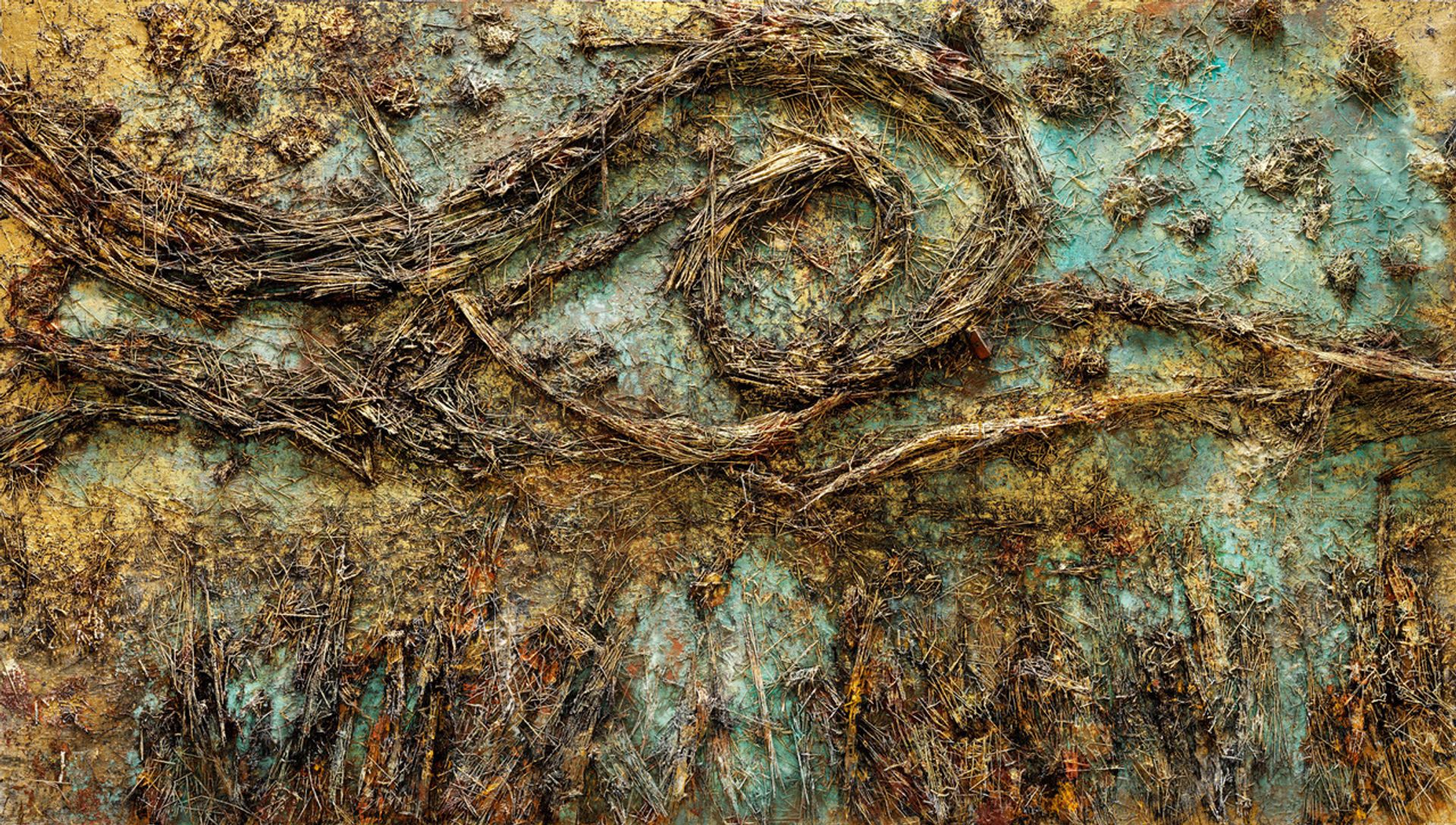
Kiefer’s The Starry Night (De sterrennacht) (2019)
Artist’s collection, courtesy White Cube
The most dramatic of the recent works is The Starry Night, inspired by the June 1889 picture in New York’s Museum of Modern Art. It is a vast composition, nearly eight metres wide, which had to be divided into three panels so it could be transported from Kiefer’s studio on the outskirts of Paris. Even then the work was too large for the museum’s handling lift and it is therefore shown in the exhibition’s lower gallery. Kiefer again used straw stuck to the canvas to suggest the swirling heavens which Van Gogh had captured in paint, making it a sculptural work.
For Van Gogh lovers, the Amsterdam exhibition also includes seven paintings by the Dutch master from the museum’s own collection, plus Augustine Roulin (La Berceuse) (February 1889) from the Stedelijk, along with four rarely displayed drawings and letter sketches.
Meanwhile, the Ashmolean Museum in Oxford currently has a quite separate exhibition covering Kiefer’s production from 1969-82, Anselm Kiefer: Early Works (until 15 June).
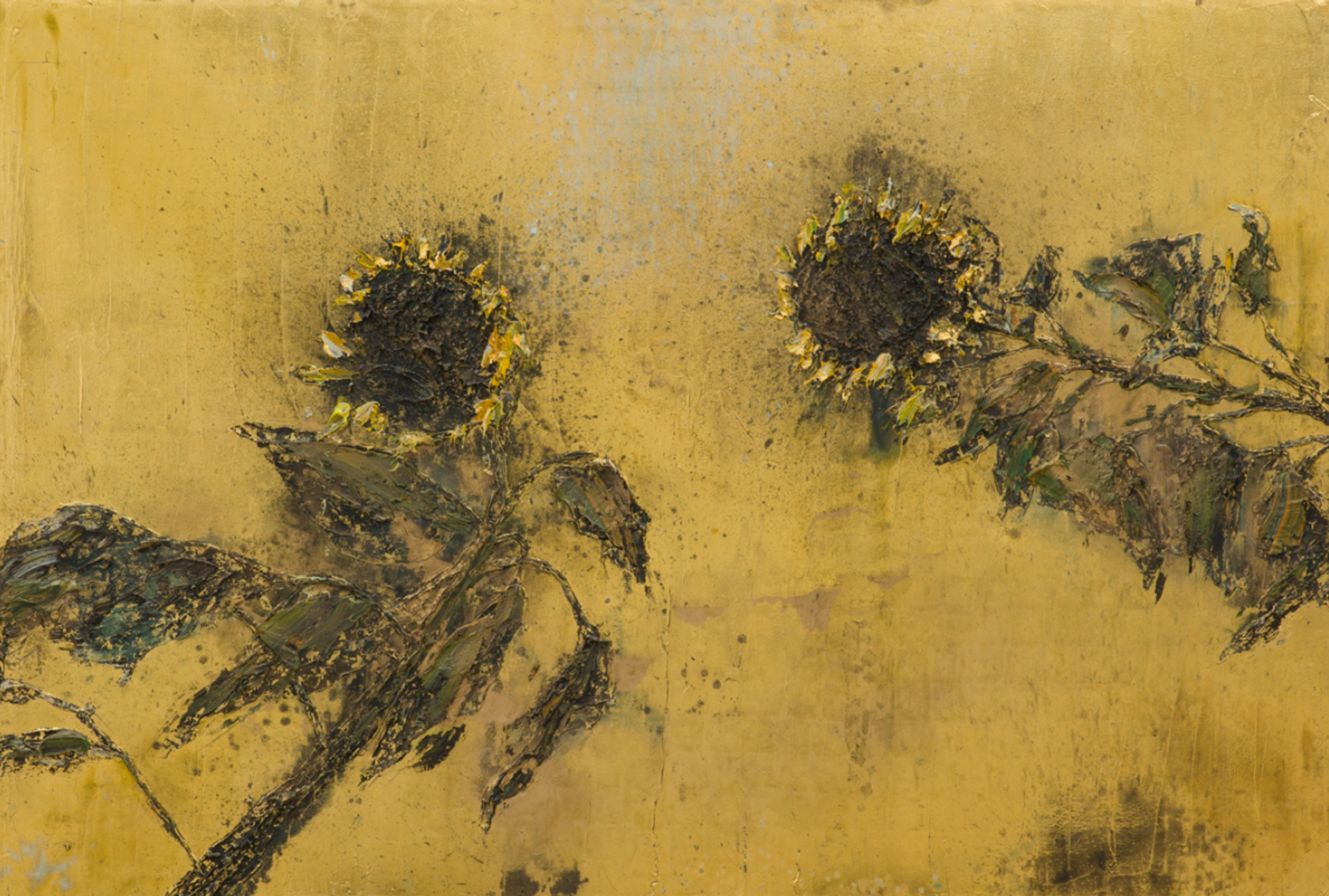
Kiefer’s Sunflowers (2023), now at the Vincent van Gogh Huis in Zundert
Atelier Anselm Kiefer
And in Zundert there is the exhibition Anselm Kiefer: Van Gogh Journey (8 March-9 June). This more modest show in the Vincent van Gogh Huis includes Kiefer’s journal, written on his youthful pilgrimage—a journey that would inspire him in his 80th year.
Other Van Gogh news
Another exhibition looking at Van Gogh’s influence on contemporary artists is Matthew Wong–Vincent van Gogh: Painting as a Last Resort, which has just opened at the Albertina in Vienna (until 19 June), following its earlier presentations in Amsterdam and Zurich. Works by Wong (1984-2019), are presented alongside eight by Van Gogh in Vienna. These include Van Gogh’s Roses and Sunflowers (1886) from the Kunsthalle Mannheim and two rarely displayed drawings from the Albertina's own collection, Cemetery in the Rain (late autumn 1886) and Landscape with House and Trees (June 1888).

Van Gogh’s Roses and Sunflowers (1886)
Kunsthalle Mannheim (photograph Cem Yücetas)


